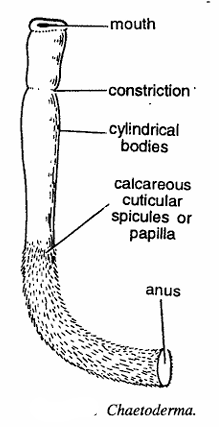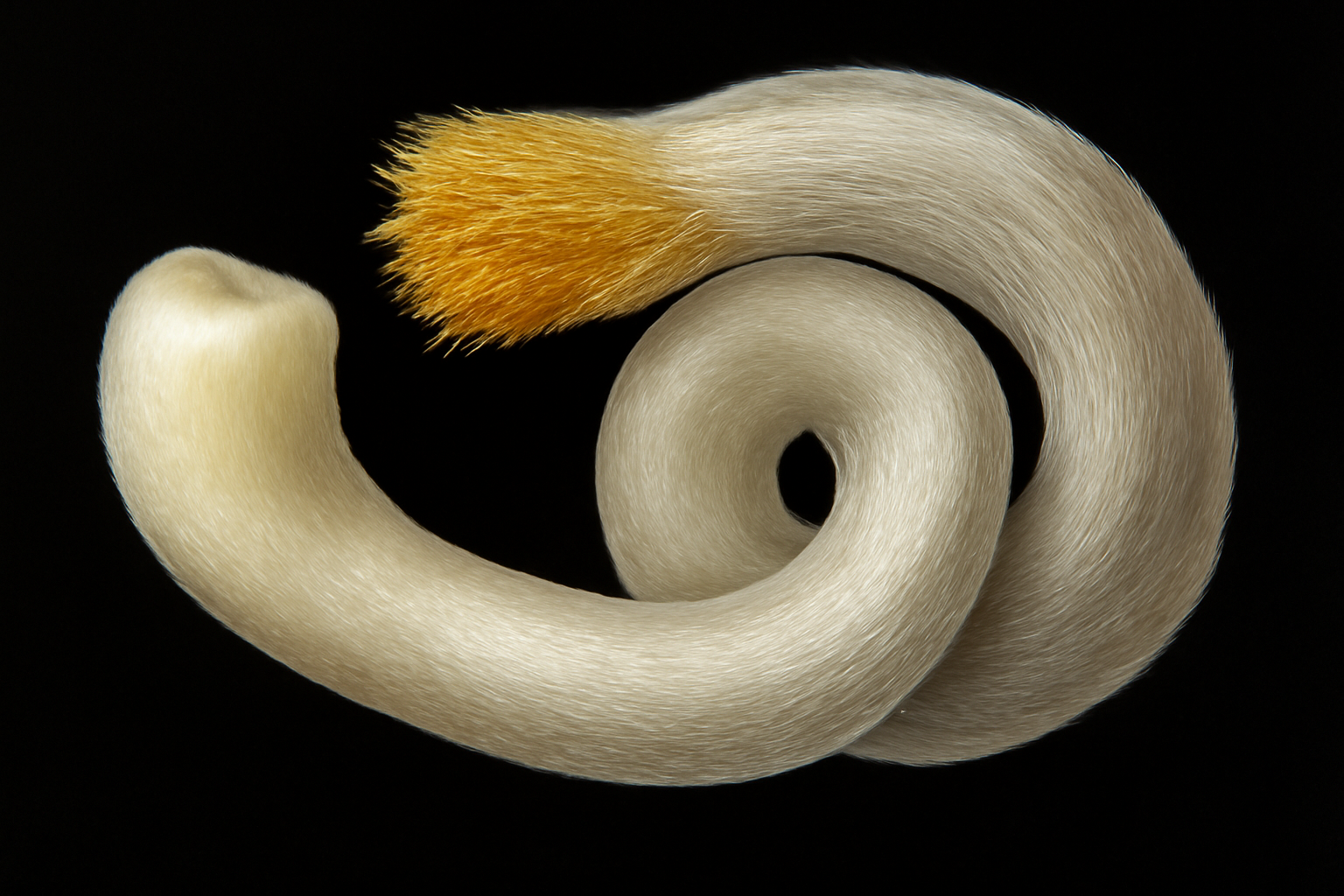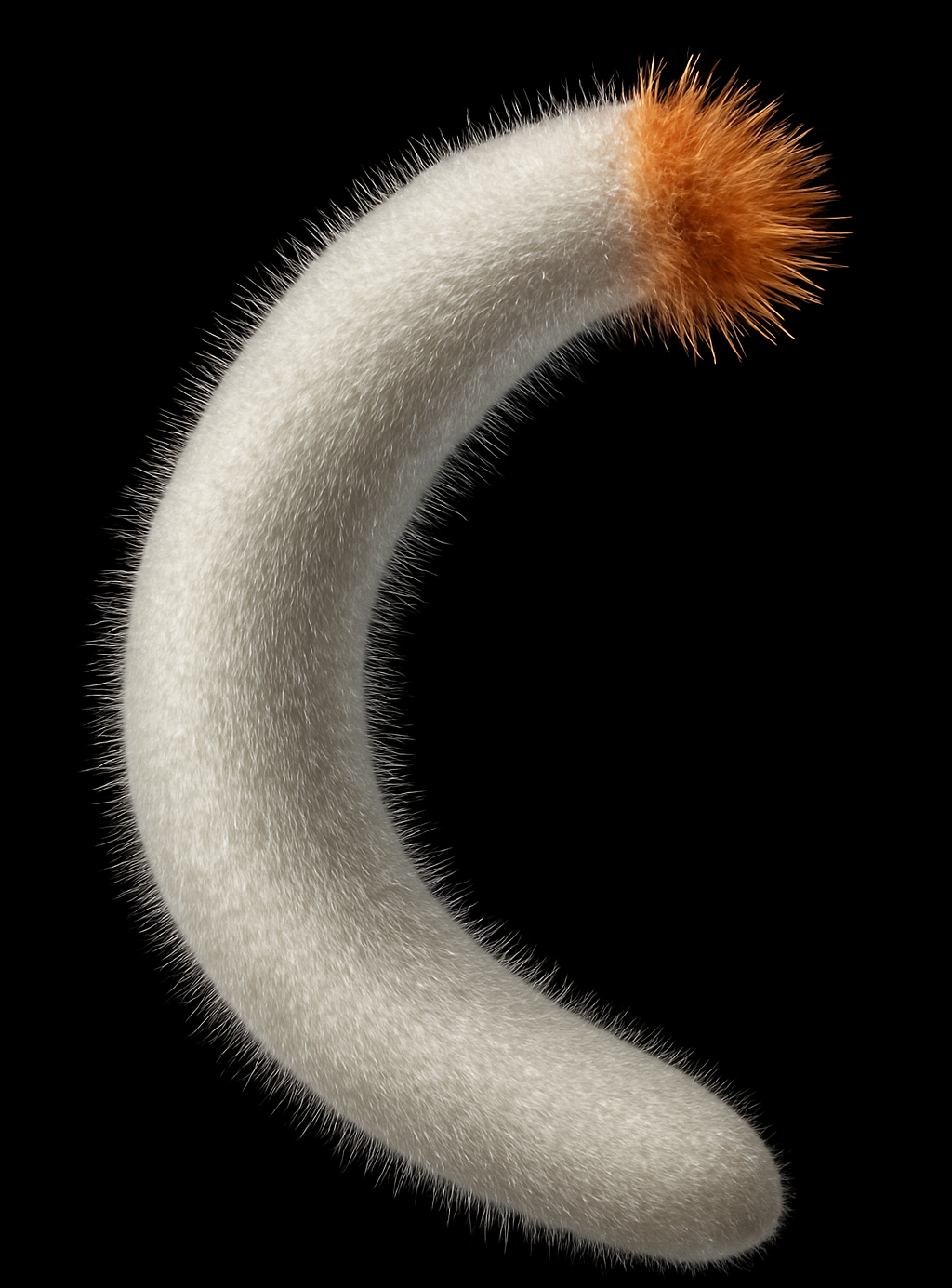Chaetoderma: Morphology, Systematics, Habitat, Life Cycle, and Ecological Significance of the Primitive Aplacophoran Mollusc
Introduction
Chaetoderma is a distinctive genus of shell-less, worm-like mollusks grouped under the class Caudofoveata (also called Chaetodermomorpha), a basal lineage within the phylum Mollusca. Sometimes called “glistenworms” for their shiny cuticle covered with calcareous spicules, members of this genus are exclusively marine and mostly dwell in deep-sea and cold-water sediments. Unlike the more familiar shelled mollusks, Chaetoderma reveals the primitive origins of the phylum, providing valuable insight into molluscan evolution, body plan diversity, and adaptation to life in marine sediment.
Classification of Chaetoderma
| Taxonomic Rank | Name | Characteristics |
|---|---|---|
| Kingdom | Animalia | Multicellular, eukaryotic organisms |
| Phylum | Mollusca | Soft-bodied, unsegmented, mainly marine animals |
| Class | Caudofoveata | Vermiform, shell-less, deep-sea mollusks |
| Order | Chaetodermatida | Aplacophorans with a mantle cavity at the posterior |
| Family | Chaetodermatidae | Covered in calcareous sclerites (spicules) |
| Genus | Chaetoderma | Worm-like aplacophorans with forty described species |

Habit and Habitat
All Chaetoderma species inhabit marine environments, favoring soft substrates such as mud, silt, or fine sand from the bathyal to abyssal zones, often exceeding depths of one thousand meters. The North Atlantic, especially the Gulf of St. Lawrence, Saguenay Fjord, the Svalbard archipelago, and British Isles are well-known habitats, but the genus also ranges into the Pacific and other cold, deep marine settings.
These animals burrow just below the sediment surface, where they encounter little light but stable temperatures and high hydrostatic pressure. Chaetoderma is thought to play a significant role as a detritivore, feeding on micro-organisms, bacteria, and organic matter within sediments.
Geographical Distribution
Chaetoderma species display a broad distribution across the world’s oceans, thriving predominantly in the cold and temperate zones of the North Atlantic but also found in the Pacific and Arctic Oceans. Species such as Chaetoderma nitidulum are widespread from the Svalbard region to the British Isles and across North America’s east coast. Some new larger deep-sea species have been reported from the Pacific in recent years.i
General Characteristics
- Body of the animal is elongated, vermiform and almost cylindrical.
- Mantle well developed and completely covering the body.
- Shell is absent but cuticle contains numerous calcareous spicules.
- Animal has anterior mouth a constriction, calcareous cuticular spicules or epidermal papillae and anus.
- Heart with single auricle. Nervous system is well developed with brain and ganglia.
- Gills are reduced to a pair found in the cloacal cavity.
- Nephridial ducts act as coelomoducts.
- Body Plan: Vermiform (worm-like), cylindrical, elongated, ranging from a few millimeters to over 10 cm, with some deep-sea forms up to 36.5 cm long.
- Spicules: Dense cuticle embedded with glistening calcareous spicules (sclerites), giving a shiny or iridescent appearance.
- Mantle and Cavity: Mantle covers the body; the mantle cavity opens at the rear end and serves for excretion and reproduction.
- Foot: True molluscan foot is absent, a key difference from other molluscan classes.
- Radula: Present and typically reduced; consists of a single pair of denticles attached to a cone-like structure.
- Head: Lacks a distinct head; mouth located at anterior end, sometimes with papillae or rudimentary tentacles.
- Nervous System: Simple, ladder-like, with a cerebral ganglion.
- Circulatory System: No heart; transport occurs via coelomic fluid.
- Coloration: Generally white, pale, or yellowish, often reflecting the color of sediments.

Special Features
- Primitive Features: Lack of shell, absence of a foot, and simple body form represent characteristics close to the molluscan ancestor.
- Sclerite Morphology: Sclerites (spicules) are unique to each species; their structure aids in species identification under a microscope.
- Burrowing Mechanism: Move by muscular contractions and the action of spicules, which help anchor and push through sediment.
- Detritivory: Feed on detritus and micro-organisms, contributing to nutrient cycling in benthic ecosystems.
- Reproduction: Separate sexes, internal fertilization; gametes are released into the mantle cavity, with direct development or lecithotrophic larvae.
- No Fossil Record: Due to the lack of hard, fossilizable body components, fossils are rare or uncertain; most knowledge is from living specimens.
Identification
- Examined via sclerite morphology under polarized light, revealing species-level differences in shape, size, and pattern.
- Other features include size, spicule arrangement, radular type, and absence of a differentiated foot.
- Molecular methods further resolve species complexes and cryptic diversity, as current taxonomic understanding indicates possible hidden lineages.
Life Cycle and Reproduction
Reproduction is sexual, with distinct male and female individuals. Sperm is usually transferred internally or via the surrounding water, entering the mantle cavity. Fertilization is thought to occur within the mantle cavity, with embryos brooded or released directly into the plankton as lecithotrophic larvae (yolky, non-feeding).
Larvae are poorly known, but available evidence indicates direct development is common, with young emerging as miniature adults, consistent with life in deep, food-scarce habitats.

Ecological Role and Importance
- Sediment Mixing: Through burrowing and detritus feeding, they contribute to bioturbation and stimulate microbial processes in the deep sea.
- Food Web Contributions: Serve as prey for specialized predators and possibly for opportunistic scavengers.
- Indicator Taxa: Presence and community diversity indicate substrate composition, water depth, and overall sediment health.
- Phylogenetic Significance: As a basal molluscan lineage, Chaetoderma and its relatives offer critical clues to the early evolution of Mollusca and the origins of morphological diversity in the group.
References
- http://www.marinespecies.org/aphia.php?p=taxdetails&id=137773
- http://www.marinespecies.org/aphia.php?p=taxdetails&id=139106
- https://invertebrate.w.uib.no/tag/chaetoderma-nitidulum/
- https://academic.oup.com/mollus/article/84/2/113/4955205
- https://ucmp.berkeley.edu/taxa/inverts/mollusca/aplacophora.php
- https://en.wikipedia.org/wiki/Chaetoderma_(mollusc)
- https://zse.pensoft.net/article/125409/
- https://www.sciencedirect.com/science/article/abs/pii/S105579031830126X
